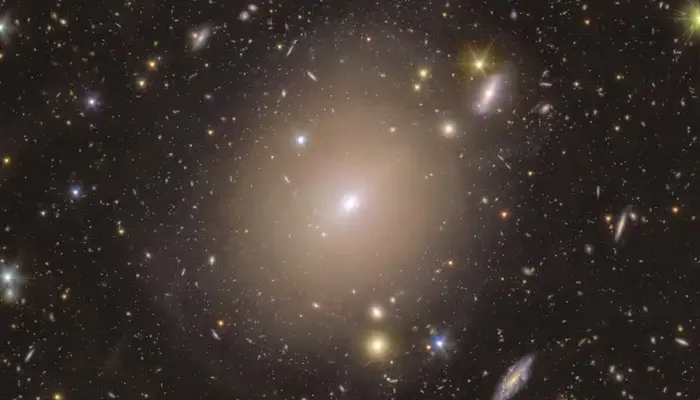Euclid Telescope Captures Stunning Einstein Ring in Space

The Euclid space telescope has captured an extraordinary Einstein ring, a rare celestial phenomenon that showcases the warping of space due to gravity. The breathtaking image reveals light bending around a massive galaxy, providing astronomers with a deeper understanding of dark matter and the structure of the universe.
A Perfect Einstein Ring
The image features the galaxy NGC 6505 with a glowing circle of light around it. This luminous ring is the stretched and magnified light of a distant galaxy 4.42 billion light-years away, hidden behind NGC 6505. The foreground galaxy acts as a gravitational lens, bending and magnifying the distant galaxy’s light.
Astronomers consider such a flawlessly circular Einstein ring extremely rare. Prof. Stephen Serjeant from the Open University expressed excitement over this discovery. “This is a beautiful, extraordinary, and lucky find,” he said. “It allows us to view a background galaxy through the warped space-time of a closer galaxy.”
Read: Moon, Mars Shine Together in the Night Sky Tonight
Gravity’s Impact on Light
Albert Einstein’s general theory of relativity predicted that massive objects bend light, just as glass lenses do. This effect, called gravitational lensing, enables scientists to study galaxies that would otherwise remain invisible. Einstein rings, in particular, provide valuable insights into the mass of intervening galaxies, including any hidden dark matter.
In this case, astronomers estimate that 11% of NGC 6505’s mass is dark matter. While dark matter is believed to dominate the universe, this percentage is lower than expected.
Revealing the Universe’s Hidden Mysteries
The European Space Agency’s (ESA) Euclid telescope is on a €1 billion mission to uncover the secrets of dark matter and dark energy, which make up 95% of the universe. The telescope aims to map the cosmos in 3D, helping scientists track the distribution of dark matter and study dark energy’s role in the universe’s expansion.
A New Era of Space Exploration
Dr. Valeria Pettorino, ESA’s Euclid project scientist, emphasized the telescope’s groundbreaking capabilities. “It’s fascinating that Euclid found this ring in a well-known galaxy,” she said. “It proves how powerful Euclid is, uncovering new details in places we thought we understood.”
With each new discovery, Euclid is reshaping our understanding of the cosmos, revealing hidden galaxies, mapping dark matter, and shedding light on the forces that shape the universe.
Follow us on Google News, Instagram, YouTube, Facebook,Whats App, and TikTok for latest updates












